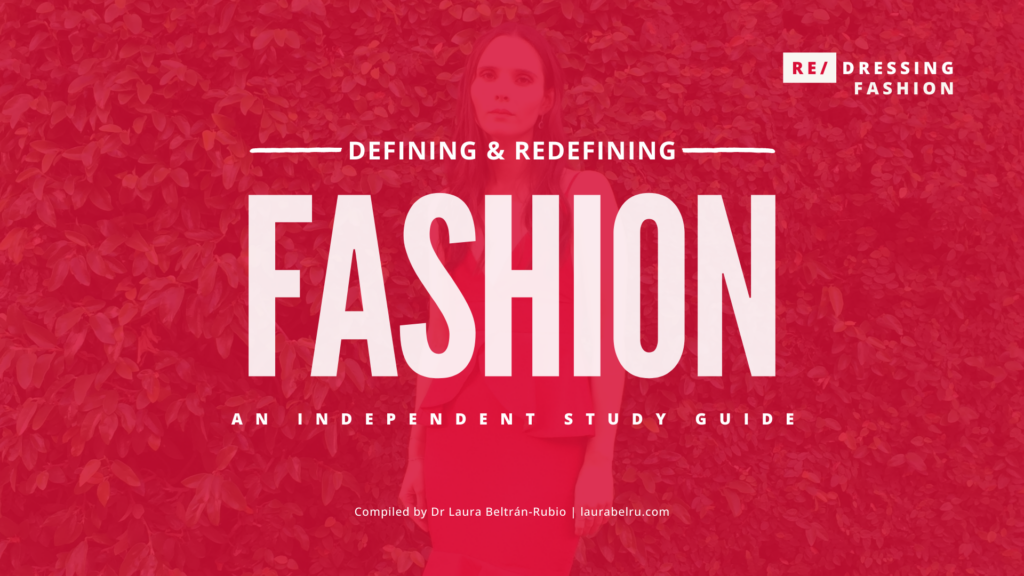You might guess that I’ve been thinking obsessively about the many possible definitions of “fashion”—and related concepts such as “costume” and “dress.” I did spend quite a while discussing my ideas about them in my last podcast episode.
Or I should say: I shared why I think we need to move past the normative definition of fashion that centers it on Euro-North American modernity and capitalism… because I didn’t delve into all of the (varied and often contested) definitions of these concepts.
Instead, I chose to leave that for later.
After a surprising strike of “genius” on Friday (if I may say so myself), I decided on “Defining and Redefining Fashion” as the subject of this month’s study guide.
And because I’m sure many of my frequent readers will want to follow my intellectual inquiries on the subject, I thought I could bring a little snapshot of my guide over here. Below you’ll find three of my favorite considerations on how to define fashion beyond the canon.
If you want to know more, please purchase my full annotated list or join my Patreon community to access brand new study guides every month.

1. The Lexicon of Fashion
This chapter of Linda Welters & Abby Lillethun’s book, Fashion History: A Global View (2018), is dedicated to summarizing and explaining some of the most commonly encountered definitions of “fashion” and other related terms, such as “dress” and “costume.” It thus lays the ground for the rest of the book, which presents a relatively ample history of fashion that expands the Euro-North American canon, and opens up to further explorations of fashion as a global phenomenon of bodily adornment.
This book will be the subject of my book club this month so please consider joining if you want to participate in a candid conversation around it. 🤓
2. Fashion Studies and Cultural Studies
In the first chapter of one of my favorite introductory volumes on fashion studies, the authors introduce fashion not as a thing or an essence but, rather, as “a social and embodied process of negotiation [that] involves becoming collectively with others.” They propose that we see fashion in relation to power dynamics, a specific time and place, and as an expression of a constantly changing sense of self.
3. Indigenous Fashionology
In this fantastic episode of Alie Ward’s podcast ologies, Indigenous fashion scholar Riley Kucheran (from Biigtigong Nishnaabeg Nation) discusses some of the most important elements of Indigenous fashion. The relational and land-based nature of Indigenous fashion is explained through a series of examples from both historical and contemporary Indigenous fashion practice.
I hope you enjoy reading and please don’t hesitate to email me or leave me a comment to share your thoughts on the ongoing debate of how to define fashion. 🤯
Thank you, thank you for reading and until next time!
—L 🩷
PS. Remember you can subscribe to my email list to receive blog updates directly to your inbox.
Leave a Reply